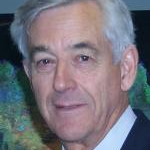Urban Remote Sensing and Sustainable Development
A special issue of Sensors (ISSN 1424-8220). This special issue belongs to the section "Remote Sensors".
Deadline for manuscript submissions: closed (31 May 2019) | Viewed by 30768
Special Issue Editor
Interests: information extraction from aerial and satellite images
Special Issues, Collections and Topics in MDPI journals
Special Issue Information
Dear Colleagues,
Following the announcement of the UN Sustainable Development Goals (SDGs) of the 2030 Agenda for Sustainable Development in 2016, all nations of the UN, over the next fifteen years, will mobilize efforts to end all forms of poverty, fight inequalities, and tackle climate change, while ensuring that no one is left behind. Since urban areas currently comprise more than 54% of the world’s populations and that figure is rising, the sustainability of urban areas should be one of the key goals for study. Indeed, SDG11 refers to ‘Sustainable Cities and Communities’. There is a range of satellite remotely sensing data available for studying aspects of urban sustainability, including from high and medium resolution satellites, as well as data derived from a range of piloted airborne and RPAS (Remote Piloted Airborne Systems) sensors. These sensors may including imaging and ranging systems, such as LiDAR and SAR (Synthetic Aperture Radar).
There are many significant unknowns in the consideration of sustainable cities and communities. Some relevant questions are: Is an urban area sustainable? what is a sustainable city or how can an urban area become sustainable? how is sustainability assessed? what levels of green and open space versus developed building spaces are appropriate for a sustainable urban environment? Remote sensing technologies should be able to be address some of these questions.
Key Issues: While not limiting the topics covered by submitted papers, suggested applications of remote sensing for urban sustainability could cover:
- How to assess the sustainability of urban environments
- What sustainability Indicators (SI) can be developed for assessing the sustainability of urban areas
- How can policy makers be guided on developing sustainable cities, as well as on monitoring and assessing the sustainability of urban areas
- How to develop and monitor sustainable industry which contributes to employment in cities
- Monitoring and managing the effects of climate change on urban environments
- Measurement of air quality and studies of air pollution
- Contributions towards sustainable energy consumption
- Sustainable infrastructure development for urban areas
- Regional spatial data infrastructure development for decision making in urban areas
I encourage all researchers with interests in the applications of remote sensing for urban sustainability, to consider contributing to this special issue.
Prof. John Trinder
Guest Editor
Manuscript Submission Information
Manuscripts should be submitted online at www.mdpi.com by registering and logging in to this website. Once you are registered, click here to go to the submission form. Manuscripts can be submitted until the deadline. All submissions that pass pre-check are peer-reviewed. Accepted papers will be published continuously in the journal (as soon as accepted) and will be listed together on the special issue website. Research articles, review articles as well as short communications are invited. For planned papers, a title and short abstract (about 100 words) can be sent to the Editorial Office for announcement on this website.
Submitted manuscripts should not have been published previously, nor be under consideration for publication elsewhere (except conference proceedings papers). All manuscripts are thoroughly refereed through a single-blind peer-review process. A guide for authors and other relevant information for submission of manuscripts is available on the Instructions for Authors page. Sensors is an international peer-reviewed open access semimonthly journal published by MDPI.
Please visit the Instructions for Authors page before submitting a manuscript. The Article Processing Charge (APC) for publication in this open access journal is 2600 CHF (Swiss Francs). Submitted papers should be well formatted and use good English. Authors may use MDPI's English editing service prior to publication or during author revisions.






